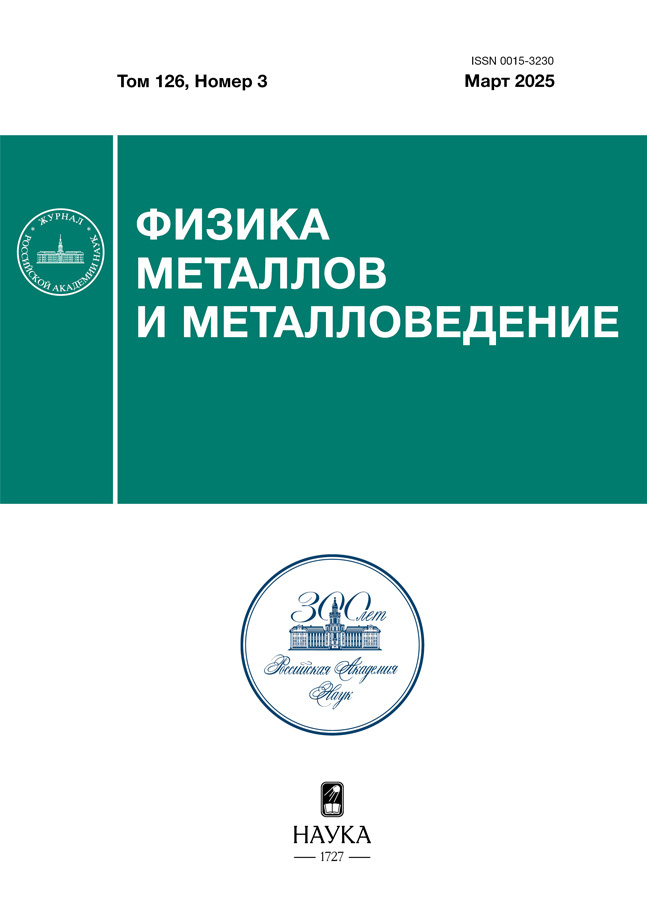Approach to low-frequency magnetic field measurements using permalloy-based magnetoplasmonic crystal
- Autores: Belyaev V.K.1, Pshenichnikov S.E.1, Andryukov A.E.1, Murzin D.V.1, Panina L.V.1,2, Levada E.V.1, Rodionova V.V.1
-
Afiliações:
- Immanuel Kant Baltic Federal University
- National Research Technological University MISiS
- Edição: Volume 126, Nº 3 (2025)
- Páginas: 264-272
- Seção: ЭЛЕКТРИЧЕСКИЕ И МАГНИТНЫЕ СВОЙСТВА
- URL: https://cijournal.ru/0015-3230/article/view/686604
- DOI: https://doi.org/10.31857/S0015323025030029
- EDN: https://elibrary.ru/IMBOVW
- ID: 686604
Citar
Texto integral
Resumo
This paper demonstrates the use of a one-dimensional magnetoplasmonic crystal based on Ni80Fe20 permalloy as a sensitive probe of a magneto-optical sensor for low-frequency AC field measurements. The sensitivity of the sensor reaches 30 mOe when operating in the frequency range from 0.1 to 100 Hz. In the course of the work, an assessment was made of the applicability of the developed sensor for measuring magnetic fields of biological objects that were subjected to electrical stimulation.
Palavras-chave
Texto integral
Sobre autores
V. Belyaev
Immanuel Kant Baltic Federal University
Autor responsável pela correspondência
Email: vbelyaev@kantiana.ru
Rússia, Kaliningrad, 236041
S. Pshenichnikov
Immanuel Kant Baltic Federal University
Email: vbelyaev@kantiana.ru
Rússia, Kaliningrad, 236041
A. Andryukov
Immanuel Kant Baltic Federal University
Email: vbelyaev@kantiana.ru
Rússia, Kaliningrad, 236041
D. Murzin
Immanuel Kant Baltic Federal University
Email: vbelyaev@kantiana.ru
Rússia, Kaliningrad, 236041
L. Panina
Immanuel Kant Baltic Federal University; National Research Technological University MISiS
Email: vbelyaev@kantiana.ru
Rússia, Kaliningrad, 236041; Moscow, 119049
E. Levada
Immanuel Kant Baltic Federal University
Email: vbelyaev@kantiana.ru
Rússia, Kaliningrad, 236041
V. Rodionova
Immanuel Kant Baltic Federal University
Email: vbelyaev@kantiana.ru
Rússia, Kaliningrad, 236041
Bibliografia
- Grosz A., Haji-Sheikh M.J., Mukhopadhyay S.C. High sensitivity magnetometers. Switzerland: Springer, 2017. C. 576.
- Murzin D., Mapps D.J., Levada K. Belyaev V., Omelyanchik A., Panina L., Rodionova V. Ultrasensitive magnetic field sensors for biomedical applications // Sensors. 2020. V. 20. No. 6. P. 1569.
- Fabricant A., Novikova I., Bison G. How to build a magnetometer with thermal atomic vapor: a tutorial // New J. Phys. 2023. V. 25. No. 2. P. 025001.
- Aslam N., Zhou H., Urbach E.K., Turner M.J., Walsworth R.L., Lukin M.D., Park H. Quantum sensors for biomedical applications // Nature Rev. Phys. 2023. V. 5. No. 3. P. 157–169.
- Rizal C., Manera M.G., Ignatyeva D.O., Mejía-Salazar J.R., Rella R., Belotelov V.I., Pineider F., Maccaferri N. Magnetophotonics for sensing and magnetometry toward industrial applications // J. Appl. Phys. 2021. V. 130. No. 23.
- Rogachev A.E., Vetoshko P.M., Gusev N.A., Kozhaev M.A., Prokopov A.R., Popov V.V., Dodonov D.V., Shumilov A.G., Shaposhnikov A.N., Berzhansky V.N., Zvezdin A.K. Vector magneto-optical sensor based on transparent magnetic films with cubic crystallographic symmetry // Appl. Phys. Letters. 2016. V. 109. No. 16.
- Dorosinskiy L., Sievers S. Magneto-Optical Indicator Films: Fabrication, Principles of Operation, Calibration, and Applications // Sensors. 2023. V. 23. No. 8. P. 4048.
- Belotelov V.I., Akimov I.A., Pohl M., Kotov V.A., Kasture S., Vengurlekar A.S., Gopal A.V., Yakovlev D.R., Zvezdin A.K., Bayer M. Enhanced magneto-optical effects in magnetoplasmonic crystals // Nature nanotechn. 2016. V. 6. No. 6. P. 370–376.
- Kiryanov M.A., Frolov A.Y., Novikov I.A., Kipp P.A., Nurgalieva P.K., Popov V.V., Ezhov A.A., Dolgova T.V., Fedyanin A.A. Surface profile-tailored magneto-optics in magnetoplasmonic crystals // APL Photonics. 2022. V. 7. No. 2.
- Murzin D.V., Belyaev V.K., Gritsenko K.A., Rodionova V.V. Effect of Filling Factor on the Coefficient of Reflection and Transversal Kerr Effect of 2D Permalloy-Based Magnetoplasmonic Crystals // Bulletin of the Russian Academy of Sciences: Physics. 2024. V. 88. No. 4. P. 591–596.
- Zayats A.V., Smolyaninov I.I. Near-field photonics: surface plasmon polaritons and localized surface plasmons // J. Optics A: Pure and App. Optics. 2003. V. 5. No. 4. P. S16.
- Belyaev V.K., Rodionova V.V., Grunin A.A., Inoue M., Fedyanin A.A. Magnetic field sensor based on magnetoplasmonic crystal // Sci. Rep. 2020. V. 10. No. 1. P. 7133.
- Murzin D.V., Belyaev V.K., Mamian K.A., Groß F., Gräfe J., Frolov A.Y., Fedyanin A.A., Rodionova V.V. Ni80Fe20 Thickness Optimization of Magnetoplasmonic Crystals for Magnetic Field Sensing // Sensors and Actuators A: Physical. 2024. V. 376. P. 115552.
- Knyazev G.A., Kapralov P.O., Gusev N.A., Kalish A.N., Vetoshko P.M., Dagesyan S.A., Shaposhnikov A.N., Prokopov A.R., Berzhansky V.N., Zvezdin A.K., Belotelov V.I. Magnetoplasmonic crystals for highly sensitive magnetometry // ACS Photonics. 2018. V. 5. No. 12. P. 4951–4959.
- Пахотин В.А., Бессонов В.А., Молостова С.В., Власова К.В. Теоретические основы оптимальной обработки сигналов: курс лекций для радиофизических специальностей. Калининград: РГУ им. И. Канта, 2008. C. 189.
- Аббасова К.Р., Богачева П.О., Васильев А.Н. и др. Руководство к практическим занятиям по физиологии человека и животных / учебно-методическое пособие для студентов 3-го курса биологического факультета МГУ имени М. В. Ломоносова, обучающихся по программе бакалавриата. Москва: Товарищество науч. изд. КМК. C. 277.
- Zhu K., Kiourti A. A review of magnetic field emissions from the human body: Sources, sensors, and uses // IEEE Open Journal of Antennas and Propagation. 2022. V. 3. P. 732–744.
- Roth B.J. Biomagnetism: the first sixty years // Sensors. 2023. V. 23. No. 9. P. 4218.
Arquivos suplementares















